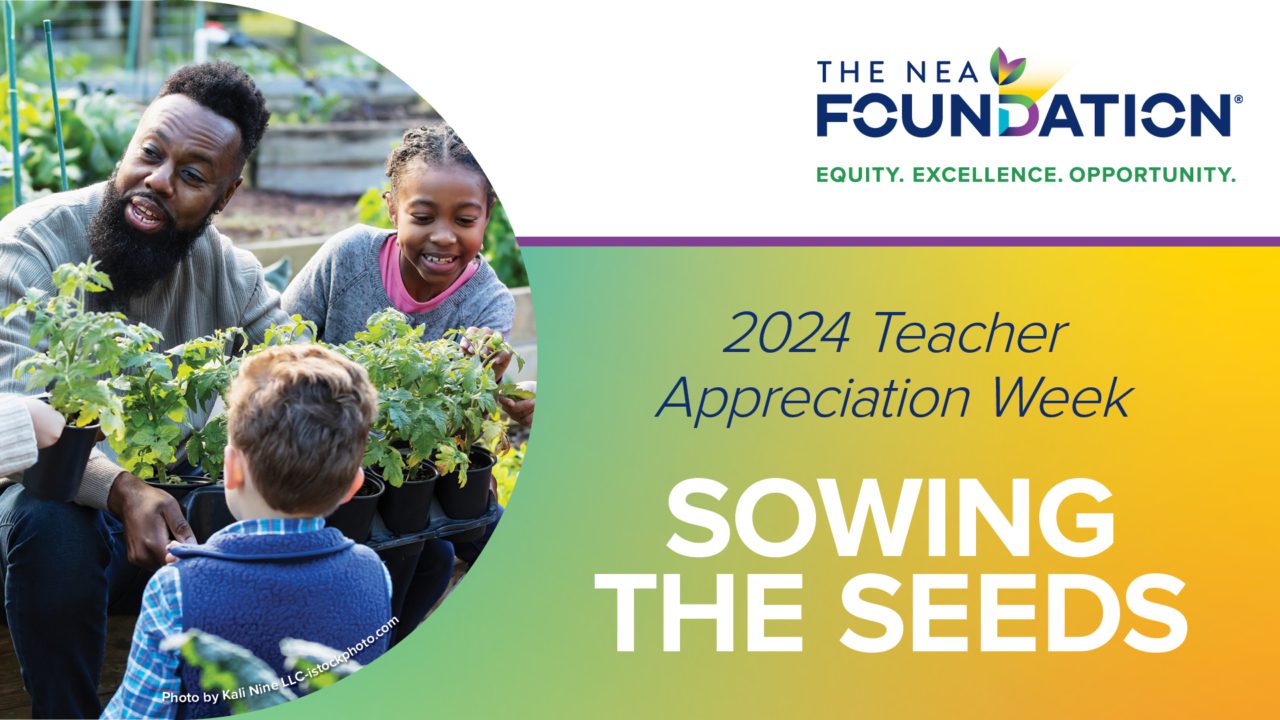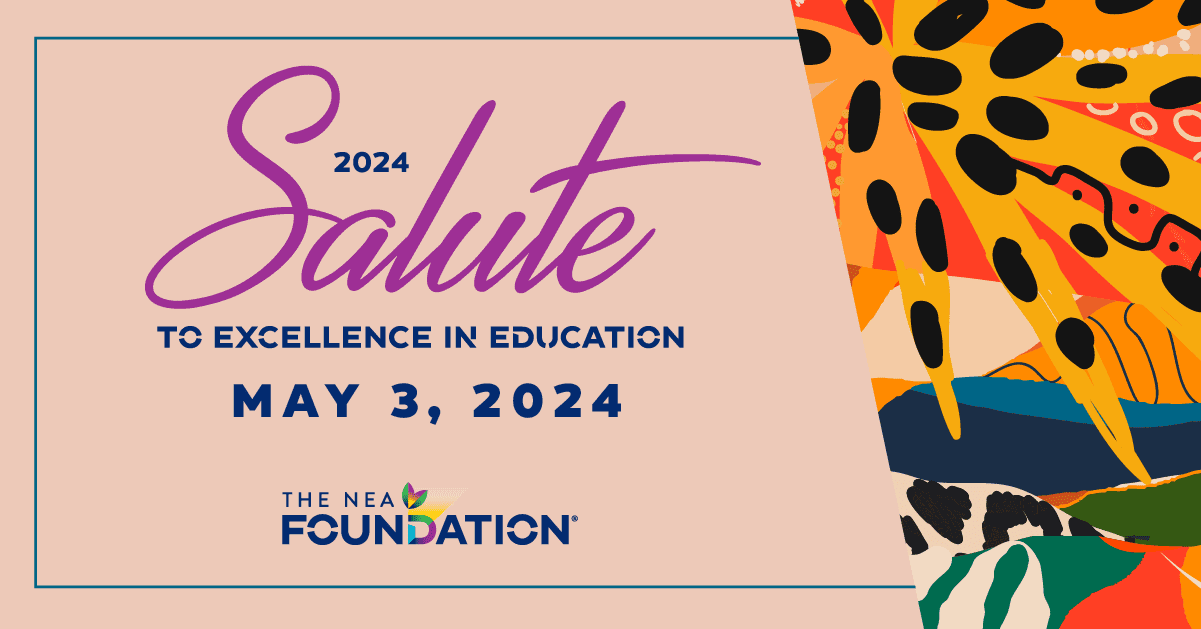This blog series features five educators who will be honored by The NEA Foundation with the prestigious 2016 Horace Mann Awards for Teaching Excellence, $10,000 and recognition as one of the nation’s top educators. They will be celebrated at the NEA Foundation’s Salute to Excellence in Education Awards Gala on February 12, 2016, in Washington, D.C.

In Dirk Andrews’ classroom, students get to learn about language arts, math, the environment, and more—all at the same time. “Teaching thematic units is my favorite way to teach because it allows students to build on prior knowledge to create their new learning. Last year I taught a unit focused on Earth Day… [and] ways the students could help to improve the planet while embedding the English Language Arts and Math Common Core State Standards. Innovative education program had a huge impact on my students and even at a young age my students started making connections about the importance of reducing, reusing, and recycling.”
Andrews, a teacher at Evansville Elementary School in Evansville, Wyoming, works with kindergarten and first grade students in a looping classroom, which means he teaches kindergarten one year, and stays with the same students the following year when they move on to first grade.
In addition to teaching a broad range of subjects in his classroom, Andrews also teaches an even broader range of students. “I am a firm believer in inclusion and believe all students can benefit socially and educationally from being included in the regular education classroom,” Andrews says. “My classroom consists of a student who is deaf, multiple students on Individualized Education Programs, and students who are learning English as a second language.”

Andrews makes sure his students learn together in one inclusive classroom setting. How does he do it? “Creating an inviting classroom where students feel safe to learn from their mistakes and ask questions is key to student learning,” Andrews says. “A few simple strategies for an inclusive setting are to include pictures or visuals whenever possible, pre-teaching academic vocabulary, allowing for lots of hands-on activities, using movements or sign language to teach academics, and using a student’s home language to make connections to the new academic vocabulary.”
Writing is one of Andrews’ favorite subjects to cover because he gets to “see so much growth in my students,” he says. “It validates my teaching, because my students start kindergarten using inventive spelling and leave me at the end of first grade writing a paragraph.”
Like many educators, Andrews says the best part of his job is when he gets to see students make connections between previous learning and a new topic. “The students can go from being a struggling learner to excelling in no time, and it makes me so proud to be their teacher!”
Share your innovative teaching methods with us! Apply for the NEA Foundation grant for education by October 15, 2015. Start the application process, today.


